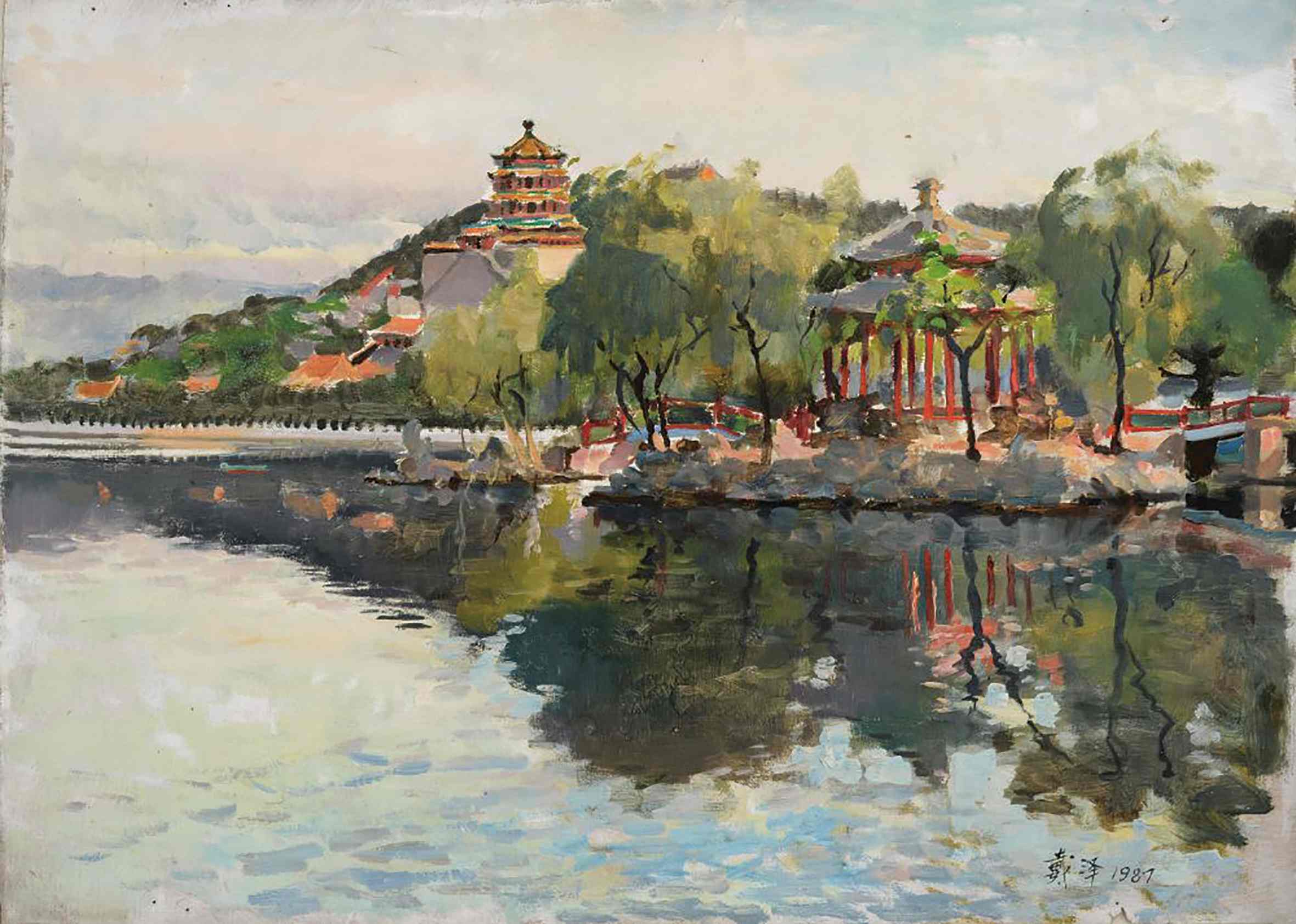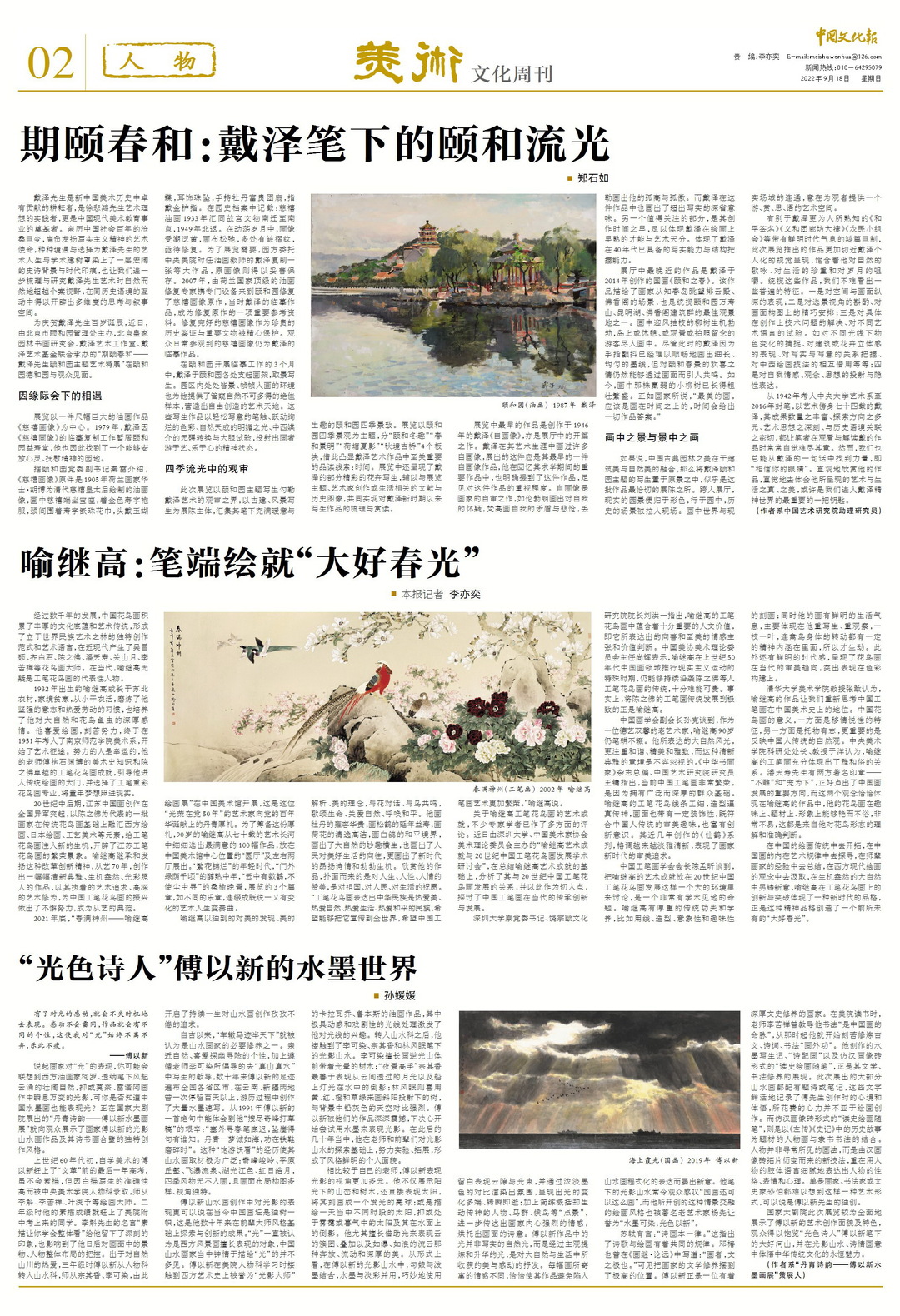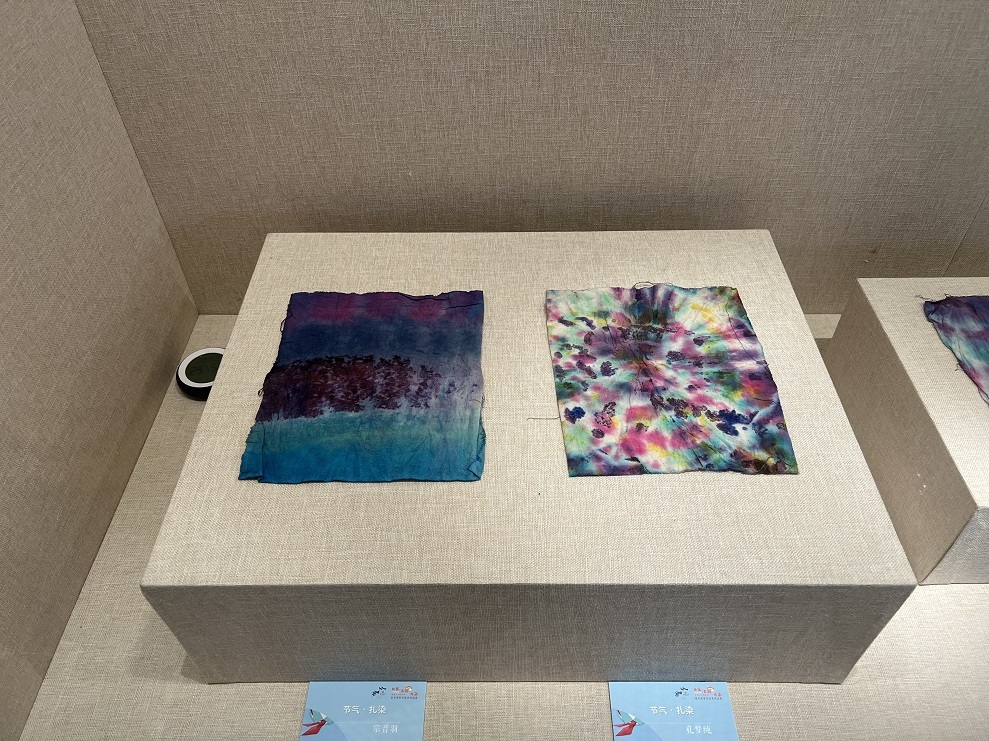Period Yichunhe: Yihe Liuang in Dai Ze's writing
Author:Cultural Tourism China Time:2022.09.18
Mr. Dai Ze is a contributor to the history of the art history of New China, the practitioner of Mr. Xu Beihong's artistic ideal, and the founder of modern art education in modern Chinese art. The vicissitudes of vicissitudes of the Chinese society for a century, shouldering the artistic mission of carrying forward the spirit of realism, all kinds of situations and the artistic life and academic folds that choose to make Mr. Dai Ze have a magnificent epic background and the seal of the times. Sorting out and studying Mr. Dai Ze's art when he is artistic, he naturally surpasses the case of the case, and can open up multi -dimensional thinking and narrative space in interaction with the historical context.
In order to celebrate the birthday of Mr. Dai Ze's century, recently, the "Period Yichunhe -Mr. Dai Ze Summer Palace, hosted by the Beijing Summer Palace Management Office, the Beijing Royal Garden Painting and Calligraphy Research Association, Daize Art Studio, and Daze Art Fund jointly organized Special Exhibition of theme Arts "Special Exhibition of the Summer Palace and Garden with the audience.

▲ Summer Palace (oil painting) Dai Ze in 1987
01
The encounter under the fate
The exhibition is centered on a huge oil painting work "Cixi Portrait". In 1979, Dai Ze temporarily lived in Yishu Hall of the Summer Palace for copying the copy of "Cixi Portrait". He also found a garden that could place his mind and soothe the spirit.
According to Qin Lei, deputy secretary of the Party Committee of the Summer Palace, the original "Cixi Portrait" was the oil portrait drawn by the Dutch painter Wincho Hu Bo for the Empress Dowager Cixi of the Qing Dynasty. Wrapped around the birthday, wearing jade butterflies, ear decoration pendants, holding a peony rich and rich group fan, pointing to wearing golden finger. It is recorded in the historical archives of the garden: Cixi Oil Painting in 1933, the cultural relics of the Forbidden City moved south to Nanjing, and returned north in 1949. In the turbulent years, the portrait is yellowed, the canvas are relaxed, and there are wrinkles in many places, which need to be repaired urgently. In order to exhibit needs, the garden party commissioned Dai Ze, who was the then oil painting teacher at the Central Academy of Fine Arts to copy a large work, and the original portrait was properly preserved. In 2007, the top oil painting restoration experts from the Netherlands brought special equipment to the Summer Palace to repair the original Cixi portrait. At that time, Dai Ze's copy work became an important reference material for repairing the original work. The well -restored Cixi portrait is carefully protected as precious historical certification and important cultural relics. The Portrait of Cixi who visited the audience daily is still Dai Ze's copy.
In the three months of the implementation of the copy work in the Summer Palace, Dai Ze raised a painting rack around the Summer Palace and sketched the scene. The environment in which the park is full of scenery and frame into the painting. He also provides him with an excellent sample that is naturally rare, creating an artistic world of free creation. These sketch works use relaxed and freehand brushstrokes, gorgeous colors, natural and bright light, non -hindered conversion and bold tests of the Chinese and Western media, and projected the psychological state of the painter to swim in the art and be happy.
02
Observation in Four Seasons Flower
The exhibition outlines the realm of Dai Ze's artistic review of the Summer Palace, and uses ancient construction and landscape sketch as the main body of the exhibition, and brings together its warmth and interesting Summer Palace four seasons. The exhibition is based on the theme of the four seasons of the Siyaki Palace. It is divided into four sections of "Yixi Winter Interest", "Spring and Jingming", "Lotus Pond Xia Shadow", "Autumn Ancient Bridge", so as to highlight the crucial reading clues of Derizer's art works: time. The exhibition also presents part of Dai Ze's wonderful flowers sketches, supplemented by literature and historical images related to the theme of the exhibition, the creation of artist's creation or life, and jointly realized the sorting and reward of Dai Ze's sketching works since the new period.
The earliest work in the exhibition was Dai Ze's "Self -Portrait" created in 1946, and it was also the opening work in the exhibition hall. Dai Ze has painted many self -portraits in his artistic career. The displayed one should be his earliest self -portrait work. He also clearly mentioned this work in the important work of his study during his studies. The emphasis on works. Self -portrait is a self -examination of the artist. For example, Rembrandt's doubt about self, Van Gogh's contradiction and sadness, Domel painted his loneliness and arrogance. Dai Ze also drew a deep meaning beyond realistic in this work. Another part of attention is the early creative time, which is enough to reflect the talents and talents of Dai Ze's early maturity in painting. It reflects the realistic ability and structural grasp of Dai Ze in the 1940s.
The latest work in the exhibition hall is Dai Ze's Chinese painting "Yiyi Spring" created in 2014. The work depicts the scene of the painter's view of Paiyun Hall and Fuxiang Pavilion from Zhichun Island, and it is also one of the best viewing places for the construction group of Wanshou Mountain, Kunming Lake, and Fuxiang Pavilion in the Summer Palace. The willow trees in the painting are full of vitality, and tourists who are on the island may be entered the painting. Although Dai Ze at this time was difficult to draw a slender and uniform ink line because his fingers trembled, the joy of the spring scenery of Yihe could still resonate with the picture. Today, the weak willow tree in the painting has grown thick and prosperous. As the painter said, "The most beautiful painting should be painted above time, and time will give all the answers to all works."
03
The scenery and the painting in the painting
If the beauty of Chinese classical gardens lies in the integration of architectural beauty and nature, then the sketch of the theme of Dai Ze's Summer Garden seems to be the most appropriate place for these works. When entering the exhibition hall, the realistic garden scene is attributed to the shape. In the garden, the historical scene was pulled into the scene. The connection between the world and real fields in the painting is intended to provide viewers with an art space of tourists, rewards, thoughts, and words.
Different from Dai Ze's well -known "Peace Signature", "Yihe Tuan Langfang Dajie" and "Farmers' Group Club", such as a clear and great system of the era. He is his singing of nature, the treasure of life, and the chewing of years. It is not difficult to see some universal characteristics in universal. First, the depth of space and the screen; the other is the consideration of the perspective of the scene and the exquisite arrangements on the composition of the picture; the third is the solution to the specific technical problems in the creation and the test of different artistic languages. Such as the capture of changes in different light, the performance of the three -dimensional sense of architecture or flower, the relationship between realism and freehand, the mutual borrowing of Chinese and Western painting techniques; Sexual expression. From being admitted to the Department of Art of the Central University in 1942 to the sealing of the Department of Art in 2016, Dai Ze, who was surrounded by art, has a rich number of results, the diverse exploration direction, profound artistic thought, and closely related to the historical context. They all make the author always consciously difficult to watch and interpret the work. However, we can always find power from Dai Ze's words, that is, "believe in your eyes". Appreciate his works intuitively, intuitively realize the true and beauty of the art and life he presented, perhaps the most important key to enter the Daize's spiritual world.
(Author is an assistant researcher at the Chinese Academy of Arts)
"China Culture News" on September 18, 2022
The second edition published a special report
"Plum Yichun He: Yi Ji Ji Light in Dai Ze"
↓ ↓ ↓ ↓ ↓ according to
Editor -in -chief: Chen Xiaoyue

- END -
Tu Feizhou Poetry Bell Selection Album (as of 2021 embedded bells) - "Guangdong and Hong Kong Poetry Bell"

Note: This episode is recorded in the Poetry Bell Embedded Personal Paper (as of 2...
Nanjing Folk Museum hosts the excellent work exhibition of summer campers

On August 16th, the Happy and Colorful Heritage -‘ I ’m a Little Heritter’ Summ...